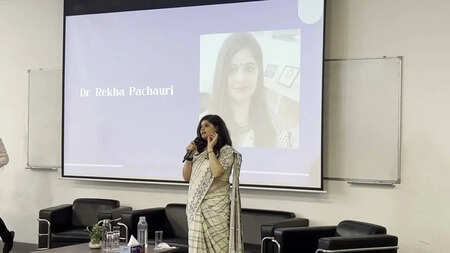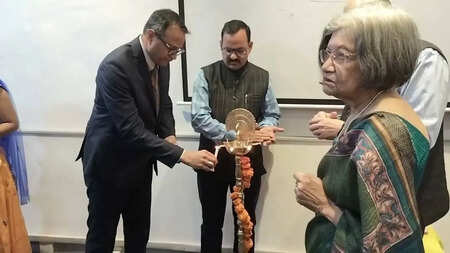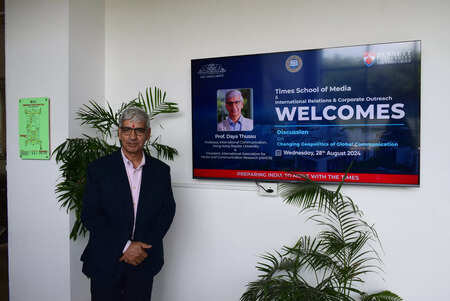Polarisation across Social Media Today
Times of Bennett | Updated: Mar 28, 2023 01:42

By Aditya Rajan
Polarisation has grown fervently over the course of the last decade, and research may suggest that, if left unchecked, the tense political climate seen in America today will only continue to evolve voraciously, culminating in the form of riots, violent protests and government shutdowns.
Surveys conducted by thePew Research Organisation suggest that Republicans and Democrats perceive each other under a severely negative and distorted lens. Some contributing factors towards this can easily be attributed towards the nature of networking and connections, both physical and online. According to the study, which surveyed 11,000 people on the basis of how many close friends they had that supported an opposing presidential candidate, around four-in-ten registered voters within both the Democratic and Republican parties said that they did not have a single close friend that qualified.
Fears across both parties have been rising for quite some time, with 70% of the members of theDemocratic party considering the Republican Party to be close-minded and dangerous, whilst close to 50% of Republicans believe Democrats to be immoral and dishonest. This has manifested in several of the fears hosted by each party about the other, with Republicans believing that Democrats want to “steal the election and force a coop”, whilst Democrats perpetuate fears of fascism being established by the US President in a bid to remain in power.
So how did we arrive at this moment in time, with a large proportion of members of the two largest parties in a country unable to find any middle-ground? Research suggests that technology is the main contributor towards this emerging crisis, growing in the form of social media platforms. In the world today, social media largely governs the cultural aspects of many countries today, even serving to connect bonds on a more international basis. However, once we look past the optimistic picture and look at the intricacies behind the algorithms with which social media platforms operate, we reveal the key factors behind the echo chambers we see in virtual spaces today. Echo chambers, by definition, are spaces where the opinion of a particular group is repeated and reinforced, whilst any opposing opinions are diminished and/or censored. Although we may not realize it, our feeds on whichever platform we use are likely to reflect similar behaviours. With the way social media platforms operate, we are more likely to be recommended posts that we agree with, as the algorithm detects that it is content that we would prefer to see on our feed.
What this results in is the fact that the content that we’re exposed to is often tailored to what our political opinion is, and hence it inadvertently creates echo chambers. Our society over the past several decades have been reliant on the interspersing of different political opinions, and a large component of this has involved exposures to opinions that we may not agree with. Ultimately, the consistent exposure resulted in us being more tolerant of opposing opinions. In today’s society, within our online sphere, we’re likely to not encounter opposing opinions unless we actively look for it. Anti-vaxxers surround themselves in communities that perpetuate their beliefs,Flat Earthers gravitate towards spaces that reward them with reinforcement of their beliefs, and any disagreement can be avoided with a simple click of a button. The issue is that how do we know that we are not being manipulated, if we refuse to tolerate the voices that oppose us unless we actively choose to.
All of these factors are the major reason why, as we enter a newAge of Technology and Networking, we need to be able to adapt to the virtual spaces we find ourselves in today and actively work towards newer perspectives, ideals and most of all the unequivocal tolerance of opinions, regardless of whether they oppose us. We are only the monsters that we perceive each other to be and unless we, as a society, take a moment to stand back and listen, this cycle of hatred and misunderstanding will be perpetuated for generations to come.
Polarisation has grown fervently over the course of the last decade, and research may suggest that, if left unchecked, the tense political climate seen in America today will only continue to evolve voraciously, culminating in the form of riots, violent protests and government shutdowns.
Surveys conducted by the
Fears across both parties have been rising for quite some time, with 70% of the members of the
So how did we arrive at this moment in time, with a large proportion of members of the two largest parties in a country unable to find any middle-ground? Research suggests that technology is the main contributor towards this emerging crisis, growing in the form of social media platforms. In the world today, social media largely governs the cultural aspects of many countries today, even serving to connect bonds on a more international basis. However, once we look past the optimistic picture and look at the intricacies behind the algorithms with which social media platforms operate, we reveal the key factors behind the echo chambers we see in virtual spaces today. Echo chambers, by definition, are spaces where the opinion of a particular group is repeated and reinforced, whilst any opposing opinions are diminished and/or censored. Although we may not realize it, our feeds on whichever platform we use are likely to reflect similar behaviours. With the way social media platforms operate, we are more likely to be recommended posts that we agree with, as the algorithm detects that it is content that we would prefer to see on our feed.
What this results in is the fact that the content that we’re exposed to is often tailored to what our political opinion is, and hence it inadvertently creates echo chambers. Our society over the past several decades have been reliant on the interspersing of different political opinions, and a large component of this has involved exposures to opinions that we may not agree with. Ultimately, the consistent exposure resulted in us being more tolerant of opposing opinions. In today’s society, within our online sphere, we’re likely to not encounter opposing opinions unless we actively look for it. Anti-vaxxers surround themselves in communities that perpetuate their beliefs,
All of these factors are the major reason why, as we enter a new











